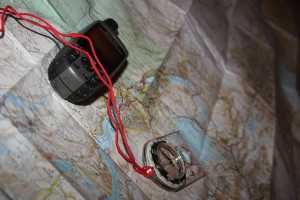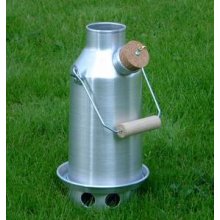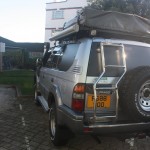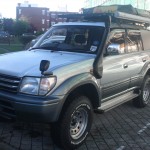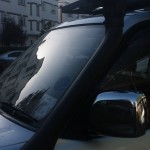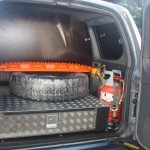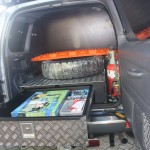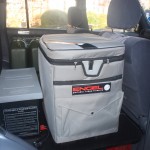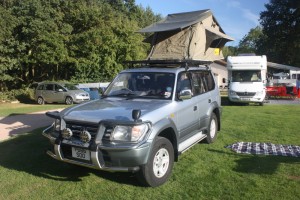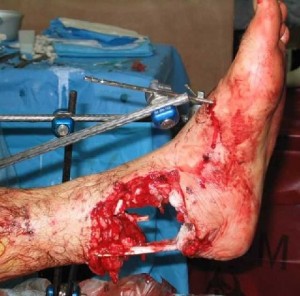A safe, reliable car can mean the difference between life and death on a trip like this. For this reason we took it for a serious service, having pretty much everything stripped, checked and replaced where necessary. Fortunately it was already in great condition (maybe it really was driven by a little old man who spent more time washing it than driving it), so we didn’t need anything major done.
As with most things we’ve got for the trip, decisions on what to get have generally been based on other people’s blogs and reviews we’ve found online. We’ve tried not to go overboard, as our budget is limited, so where we can we’ve gone for 2nd hand stuff. Without trying to be melodramatic, it’s sobering to think that on a trip like this a normal inconvenience like a flat car battery or tyre could lead to a life or death situation. When it comes to things that could affect our safety we’ve gone for the best we can afford.
Modifications to the car include the following:
New shocks – We opted for Old Man Emu shocks to handle the extra weight we will be carrying.
Wheels – We replaced the alloy wheels that came with the car with steel ones, meaning that if a wheel is bent or damaged we can use an FBH (Very Big Hammer) to knock it back into shape. We replaced the tyres with BFG All Terrains – they come highly recommended as being extremely robust with tread to churn up elephant dung as if you’d popped it into a food processor. We’ve opted for 2 spares, and suddenly you realise how expensive this business is – we’ve basically spent the same on wheels and tyres that flights, accommodation and a diving course in Egypt cost me several years ago. We have a saying in my family for things like this – I theeeeenk I’m going to faaaaint!
Split charge system – We now have 2 batteries – a heavy duty one to start the car, and a 2nd one that allows us to run things like the fridge and camp lighting without worrying about draining the main battery. Hopefully the second battery doesn’t go flat because without trying to sound melodramatic again, it is scary to think that a warm beer could turn into a sobering situation.
Snorkel – We aren’t planning on crossing raging rapids, but theoretically it makes a huge difference to to the air intake, reducing the amount of dust clogging up the air filter. They also look so cool!
Packing space – We’ve had the middle and rear seats removed and installed a sturdy hexboard dog guard to separate the back and middle of the car. Unfortunately this means that we can’t take any passengers. Fortunately it also means that we can’t help people move house. Water and the fridge will go in the middle and the rest of our stuff will go in the back, with as little as possible going on the roof. We’ve installed a sturdy drawer system in the boot, which when open will also act as a table for our cooker for the one or two nights when we don’t have a braai.
Safe – we installed a safe for cash and passports.
Gearlock – The gearlock locks the car in neutral, and hopefully will prevent it from being stolen.
Other modifications include a steering guard, jacking points, recovery points and a bright LED light on the back to use at night when preparing food and looking for stuff.

